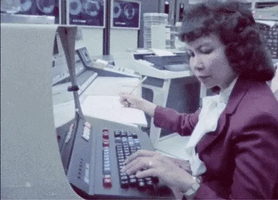In Latin America, retaining customers is one of the biggest challenges for small and medium-sized...
What is Artificial Vision? (2024)
Introduction to Artificial Vision
Artificial vision encompasses a set of technologies and methodologies that enable machines to process and understand visual content in a manner similar to humans. In other words, it provides computer systems with "eyes" and "brains" to interpret and analyze images autonomously.
Main Features:
- Visual Interpretation: Artificial vision allows machines to interpret and comprehend visual content, identifying objects, patterns, shapes, and other elements present in images.
- Image Analysis: Through algorithms and image processing techniques, artificial vision can analyze and extract relevant information from images, such as object detection, facial recognition, and more.
- Diverse Applications: This technology has applications across a wide range of sectors, from medicine and agriculture to manufacturing and retail.
Benefits of Artificial Vision:
- Process Optimization: It automates tasks that require the processing of visual information, leading to greater efficiency and productivity in business operations.
- Improved Accuracy: Artificial vision can perform visual analysis with precision and speed that surpass human capabilities, reducing errors and enhancing the quality of results.
- Service Personalization: By better understanding customer preferences and needs through image analysis, companies can offer more personalized and tailored products and services to meet market demands.
Applications of Artificial Vision in Business
IIn this section, we will explore how artificial vision is transforming business operations and enhancing customer experience through several key applications.
Artificial Vision in Business
Artificial vision is becoming an essential component in various industries, revolutionizing how businesses operate and offer their products and services. Here are some concrete examples:
- Product Inspection: Manufacturing companies use artificial vision systems to inspect product quality on the production line, identifying defects quickly and accurately.
- Workplace Safety: Artificial vision is used to monitor safety in work environments, detecting dangerous behaviors or intruders and alerting security personnel.
Image Recognition Technology
One of the most powerful features of artificial vision is its ability to recognize and analyze images, which has significant applications in the business realm:
- Inventory Management: Companies can use image recognition systems to identify products on shelves or in warehouses, facilitating inventory management and stock replenishment.
- Security and Access Control: Facial recognition is increasingly being used to control access to business facilities, enhancing security and eliminating the need for ID cards.
Automated Responses Based on Customer Images
Artificial vision is transforming how businesses interact with their customers, allowing for quicker and more personalized responses:
- Problem Detection in Products: Companies can use artificial vision to analyze images sent by customers and detect issues with products, such as manufacturing defects or damage during transport.
- Identification of Customer Preferences: By analyzing images of products or services, companies can identify customer preferences and offer personalized recommendations, thus enhancing the shopping experience.
How Artificial Vision Can Help Businesses
Artificial vision is not only an innovative technology but also an invaluable tool for improving business efficiency and customer experience. Below, we explore two key areas where artificial vision can make a difference:
Image Analysis for Customer Service
The ability of artificial vision to analyze images is transforming how businesses interact with their customers. By better understanding the needs and concerns of customers through image analysis, companies can provide more precise and personalized responses, significantly improving the customer experience.
Imagine a customer sends a photo of a defective product. With artificial vision, the company can analyze the image to identify the specific problem and provide a swift and effective solution, such as a free replacement or a refund.
Artificial Vision for Businesses
Artificial vision has a broad spectrum of applications in the business realm, from correcting defects on the production line to tracking and tracing products. These applications help optimize business operations, increase efficiency, and improve the quality of the final product.
Additional Examples:
- Defect Correction on the Production Line: A manufacturing company uses artificial vision systems to detect defects in products in real-time, allowing immediate correction and reducing material waste.
- Tracking and Tracing of Products: A supermarket chain implements artificial vision systems to track product movements in their warehouses, facilitating inventory management and ensuring product freshness and availability for customers.
- Workplace Safety: A construction company uses cameras equipped with artificial vision technology to monitor safety at their work sites, automatically detecting hazardous situations and preventing accidents.
DARWIN AI: The Solution for Image-Based Customer Interactions
DARWIN AI is an innovative solution designed specifically to meet businesses' needs regarding image-based customer interactions. With a combination of advanced technologies, DARWIN AI offers several key benefits:
- Reception and Understanding of Images: DARWIN AI has the capability to receive images sent by customers and understand their content quickly and accurately. This function is essential for effectively understanding customers' needs and concerns.
- Generation of Automated Responses: Once DARWIN AI has analyzed the received image, it can generate automated responses based on the visual content. This enables businesses to offer personalized and efficient customer service, even in situations where visual analysis is required.
- Enhanced Customer Experience: By using DARWIN AI, businesses can offer an exceptional customer experience, surpassing current market expectations. The ability to understand and respond to customer images quickly and accurately enhances customer satisfaction and strengthens the brand relationship.
- Operational Efficiency: In addition to improving the customer experience, DARWIN AI also contributes to the operational efficiency of businesses. By automating the process of analyzing and responding to customer images, it reduces the workload of staff and optimizes available resources.
Conclusions
Artificial vision enables machines to interpret and understand visual content in a way similar to humans, opening a world of possibilities in terms of task automation, accuracy improvement, and service personalization. From product inspection to workplace safety, this technology is transforming how businesses operate across a wide range of industries.
In particular, the ability of artificial vision to analyze images and generate automated responses is revolutionizing how businesses interact with their customers. With solutions like DARWIN AI, companies can offer more personalized and efficient customer care, improving customer satisfaction and strengthening the brand relationship.
While it's true that implementing artificial vision can pose some challenges, we firmly believe that the benefits of this technology far outweigh any obstacles that may arise. Failing to adopt artificial vision may result in a loss of competitiveness and a deficient customer experience compared to competitors who do utilize it





